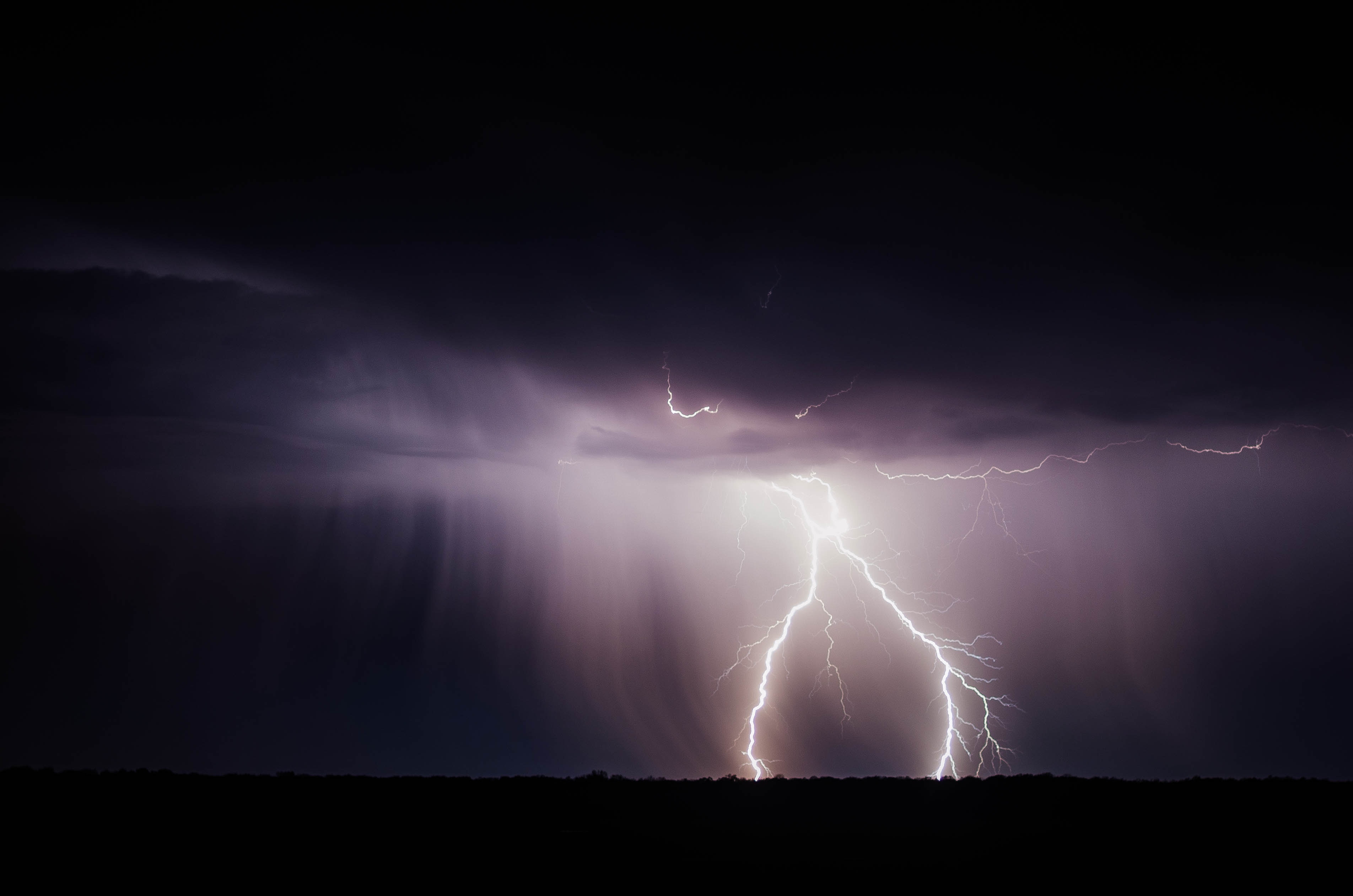
It's a busy Saturday afternoon in April and Sara is running her weekly errands all over town. Sara works full-time and is a single mom who is also responsible for checking on her 88 year-old father who still lives alone. It has taken her longer today because it's been storming. All of a sudden the sky has become eerily quiet. On her way into the grocery store she hears the storm siren and people start running into the store saying there's a tornado on the ground west of town. Take cover! Her 12-year old daughter Claire is home alone and so is her father. What is she going to do?
Tornadoes and severe thunderstorms are high on the list of natural disaster risks for Northeast Kansas. They can occur at all hours of the day and night, but are most likely to occur between 3 and 9 p.m. and there may not be much advance warning. As a caregiver, your responsibilities grow exponentially. Sara needs to be prepared for all possible levels of disaster, and that means making sure her daughter and her father are also prepared.
Let's begin with the basics. A severe thunderstorm watch means severe thunderstorms are possible in your area. A severe thunderstorm warning means severe thunderstorms are occurring in your area.
During a Tornado Watch
- Stay tuned to local radio and TV stations or a National Oceanographic and Atmospheric Administration (NOAA) Weather Radio for further weather information.
- Watch the weather and be prepared to take shelter immediately if conditions worsen.
In Douglas County there is no siren for a tornado watch
During a Tornado Warning
- A tornado warning is issued when a tornado funnel is sighted or indicated by weather radar.
- You should take shelter immediately.
In Douglas County siren sounds only for Tornado Warning
In the event that a tornado or severe thunderstorm strikes and the worst case scenario becomes a reality, Sara and her father may be without utilities or worse, in a damaged home or apartment. If something like this happens they will fare better if they have an emergency plan with emergency kits in place.
This basic kit should include:
- One gallon of water per day per person for drinking and sanitation
- A 3-day supply of nonperishable food (include a manual can opener)
- Medications, clothing, medical supplies, and necessities for at least 3 days (up to 2 weeks) per person
- A waterproof container for important documents such as insurance papers, family records, passports, a few keepsake pictures, etc.
- A first-aid kit and a whistle to signal rescuers
- A battery-operated radio, flashlight or lantern, and other tools and supplies to maintain or repair equipment
- Don't forget about your pet and his/her food/supplies
An individualized emergency plan will make a big difference in the response and recovery phases after an emergency. If Sara's father has medical equipment, especially something that would require electricity, then the plan will become more detailed and significant to plan for an electrical outage, as this could now be a life and death situation. If you are a caregiver to someone with specific medical issues or uses various durable medical devices, there is a second step to your emergency plan:
- Notify the electric company of the medical need for electricity
- Keep extra batteries for hearing aids or medical devices (power wheelchair)
- Keep an emergency supply with at least 7 days of medications
- Have extra assistive devices available (manual wheelchair, walker) in case electric wheelchair battery is depleted
After a disaster, you may have little or no damage or complete destruction. There is one additional kit to assemble with the hope that you will never have to use it. This kit should be in a waterproof, fireproof container as this will protect the contents in the event that you have property damage. This final kit should include important information (in paper or digital format) that will be critical as you contact emergency services, insurance companies, etc. Vital documents in this kit include:
- Names, addresses, and telephone numbers of your insurance agents, including policy types and numbers
- Pictures or video of each room in your home with furniture, artwork, collectibles, etc. (anything that is covered under insurance & would need pictures for insurance claim)
- Serial numbers of all electronics listed above plus any Smart phones or other personal electronic devices
- Telephone numbers of the electric, gas, and water companies
- Names and telephone numbers of neighbors
- Name and telephone number of your landlord or property manager
- Important medical information (allergies, regular medications list, etc., and brief medical history)
- Year, model, license, and identification numbers of your vehicles (automobiles, boats, and RVs)
- Bank's or credit union's telephone number, and your account numbers
- Will, Advanced Directive, Birth certificates, marriage certificates, vaccination records, other vital records
- Pet's documentation – vaccination records, etc.
Sara has completed all three emergency kits for her household and her father's and they have practiced their emergency plan. She knows they are prepared. What about you? Don't wait. Make a plan and prepare your emergency kits now. Be prepared for emergency challenges.
By Kristin Reed
QI/Compliance Manager
Douglas County Visiting Nurses Association
Kristin Reed has first-hand experience implementing emergency plans from evacuating her home in New Orleans three times for hurricanes and spending five days without electricity in August. Kristin now lives in Lawrence and is the QI/Compliance Manager for the Visiting Nurses Association.